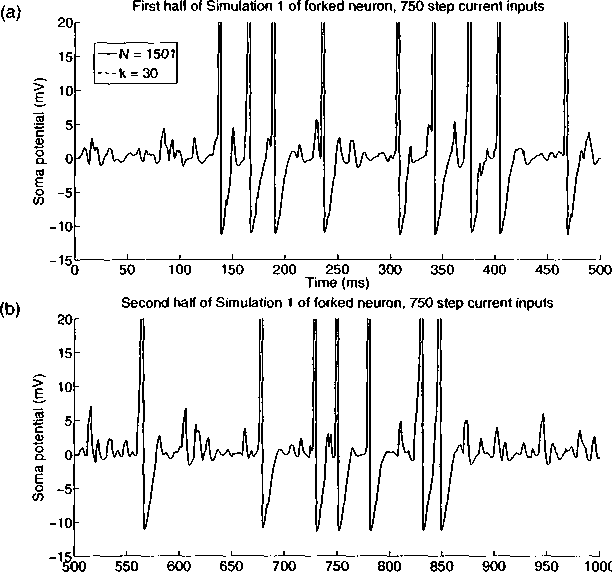86

Time (ms)
Figure 3.5: Somatic voltage traces of the nonlinear and reduced models for (a) first half
and (b) second half of simulation 1 of the HH forked neuron.
radius 8 μm, agreeing with the morphological parameters as given in Railpack 2 of
(Bhalla et al., 1992). We consider two variants of such a tree: one in which the
dendritic radii do not taper and one in which they taper linearly along the length
of the dendrites. In the reduced systems, the V-Slim tolerances are εj,ocal = IO-2,
εiocai = lθ '∖ ¾obai = ɪɔʌ ancI ɛgɪɑbai = lθ-5> and the step between snapshots in the
global active zone is 4. We run 20 simulations of 1000 ms each with ∆t = 0.1 ms,
just as for the forked neuron, only this time we use 600 random currents of 0-500 pA
amplitude and 0-5 ms duration.
The results shown in Table 3.5 show that the reduced system recovers spiking
More intriguing information
1. The name is absent2. LOCAL PROGRAMS AND ACTIVITIES TO HELP FARM PEOPLE ADJUST
3. Connectionism, Analogicity and Mental Content
4. Research Design, as Independent of Methods
5. Temporary Work in Turbulent Times: The Swedish Experience
6. The name is absent
7. The name is absent
8. European Integration: Some stylised facts
9. Running head: CHILDREN'S ATTRIBUTIONS OF BELIEFS
10. The name is absent